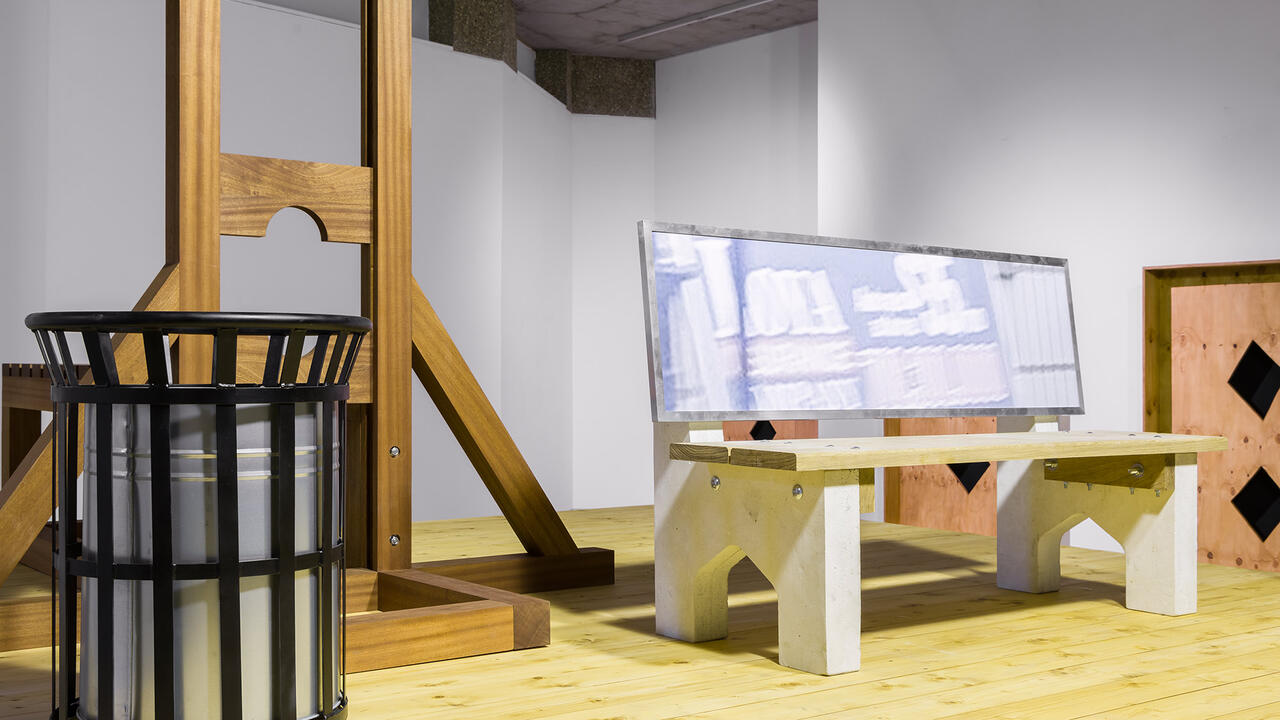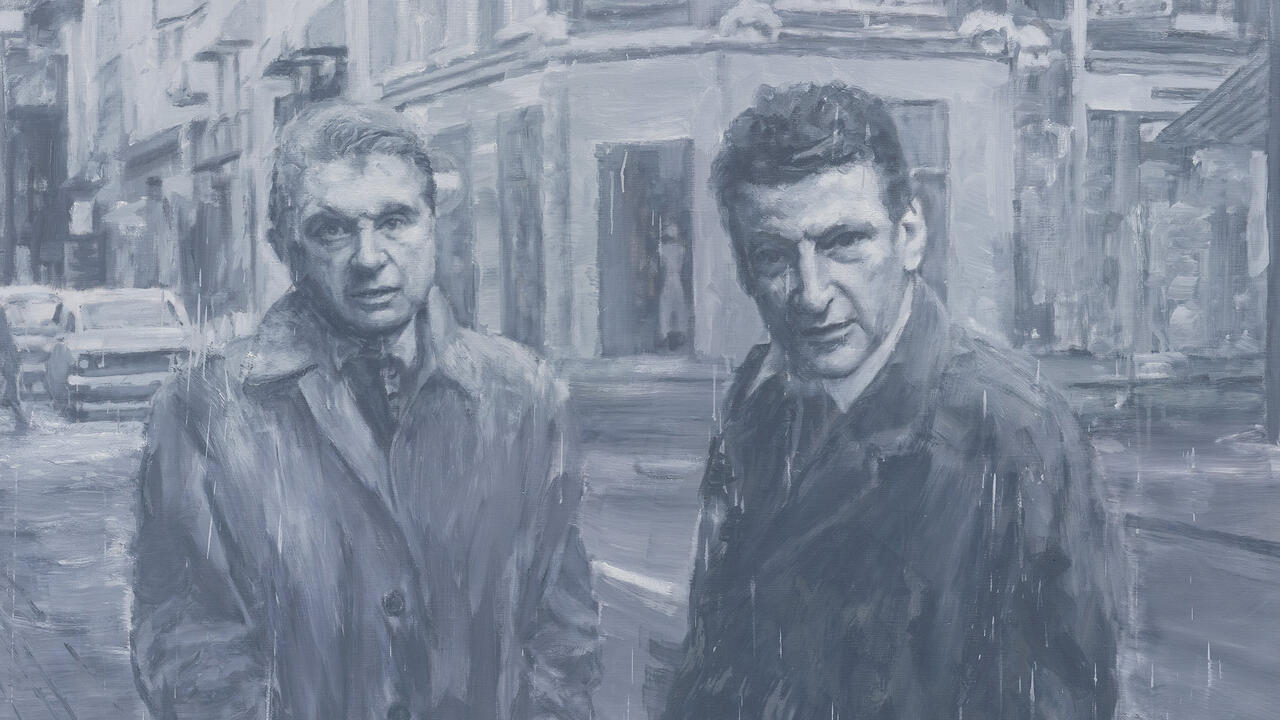Indian Highway
Serpentine Gallery, London, UK
Serpentine Gallery, London, UK

More than seven years after Tate Modern selected Mumbai (together with London) to represent the 1990s in their ‘Century City’ exhibition, ‘Indian Highway’ offered the first serious attempt in the UK to showcase contemporary art from India. Over recent years art from the subcontinent has been pushed into the limelight by inflated auction results, developing local galleries and, abroad, a strong desire to engage with emerging artistic regions. This was the Serpentine’s second chapter in a series of exhibitions dedicated to mapping global art practices, and, shunning multi-coloured exhibition walls and Hindi-script imitations, curators Julia Peyton-Jones, Hans Ulrich Obrist and Gunnar Kvaran departed from the bazaar-like feel of other recent shows on the subject and used performance, site-specific installation and other curatorial devices to back up the credentials of contemporary Indian art.
The first work encountered in the gallery space was a bucolic painting of the Serpentine pavilion. It served as a backdrop to various objects lying on the ground as part of Nikhil Chopra’s Yog Raj Chitrakar: Memory Drawing V, 2008. These were the remnants of a performance by Chopra, who camped in front of the Serpentine for three days in homage to his landscape-painting, Goldsmiths-trained grandfather. The same loose historical contextualization could be seen outside, where 13 posters of works by M.F. Husain, India’s renowned Modernist painter, were exhibited on a specially designed structure wrapped around three walls of the gallery. The broad slabs of colour inscribed in dark contours depicted a late colonial tiger-hunting scene, Mahatma Gandhi and Mother Teresa and included references to Hindu deities and the Last Supper. Husain, who lives in self-imposed exile in London and Dubai, has become a standard-bearer for India’s secular art world since he was violently threatened by Hindu nationalist groups for having painted Hindu goddesses in erotic poses. But beyond this noble affinity of ideas there is not much to link him with the rest of the art on display.
The ‘show within a show’ was a conceit used in ‘Indian Highway’ for Raqs Media Collective to curate a space dedicated to video art. The exhibition itself supposedly served as the subject of N.S. Harsha’s Reversed Gaze (2008) mural. It depicted a painted makeshift barrier, reminiscent of Indian demonstrations, dividing the exhibition space from a surreal cluster of people that included a man in Nehru-style clothes and a collector holding a painting signed ‘R. Mutt’. The spectacle, we were told, was the ‘Indian Highway’ exhibition. But the work was not much more than a mix of easy symbolism – it included a white dove shot by a gun – and hasty word games on East–West historical relations that insidiously crept into the rest of the exhibition space. The result was irritation rather than unease, exacerbated by the fact that, far from existing outside the Western art system, most of the exhibiting artists are now affiliated to high-powered galleries, such as Hauser & Wirth and Yvon Lambert.
The impulse in Indian contemporary art to record the changes that Indian society is undergoing often results in literal image production, in which art and political activism take turns. The second group of works mostly responded to the country’s social and political problems and drew a rather sceptical portrait of the subcontinent. In Amar Kanwar’s eight-channel film cycle The Lightning Testimonies (2007) each film tells a different story of violence committed against women throughout the subcontinent. These gripping narratives accompanied by first-person commentaries provided a needed counterpoint to the numerous single-channel videos installed in the lobby, corridors and in the Raqs Media Collective show. Projected onto walls or mounted on ladders, the videos mainly tackled the transformations of the Indian urban landscape and the communal politics of the Hindu nationalist movement. With the exception of an off-beat performance of an artist trying to fly (Kiran Subbaiah, Flight Rehearsals, 2003) and a selection of old movie clips (Ayisha Abraham, You are here, 2008), the disparateness of the videos made it hard to sustain one’s attention.
Another common feature of Indian contemporary art is the recycling of everyday objects that make up the texture of Indian life. This can create visually exciting and geographically destabilizing works, but in ‘Indian Highway’ such works were replaced by more restrained choices, thereby exposing weak conceptual underpinning. Jitish Kallat’s lenticular prints of the layered walls of slum dwellings (Cenotaph (A Deed of Transfer), 2007) echoed Sheela Gowda’s tar drum shelter construction (Darkroom, 2006) but did not do much more than create a diffuse ambience of urban India. The same might also be said of Dayanita Singh’s colour photograph of the Mumbai skyline surprisingly blown up and transformed into wallpaper (Dream Villa 11-2007, 2008). Bose Krishnamachari’s chaotic portrait of Mumbai presented on small video screens in suspended tiffin boxes suffered from its installation in a corner room (Ghost: Transmemoire, 2006–8). Subodh Gupta’s contribution marked a promising departure from his shiny bronze recasts of everyday objects, yet his parody of a shabby Indian civil servant’s office space, where torn-down chairs and desks were chained to each other and crumbling files spilt out of wooden cabinets (Date by Date, 2008), felt like a muted response to the tragically real empowerment that the Indian bureaucracy still enjoys.
There has been an element of repetitiveness in Indian contemporary art survey exhibitions; in the choice of artists, and even of works, but above all, in the way curators have generally stepped back to let the art cumulatively recreate the cacophonic experience of urban India. In that sense ‘Indian Highway’s ambitious attempt deserves praise. It marked a new approach, one that was tightly conceived and selective. But this couldn’t fully compensate for the shortcomings of Indian contemporary art. While it has received a remarkable degree of interest from international museums, galleries and biennials, it still bears the marks of its rapid growth, the occasional laxity of critical scrutiny and market-driven demand. The mixed response that ‘Indian Highway’ elicited already points to a new, hopefully more demanding, phase in artistic creation.
























